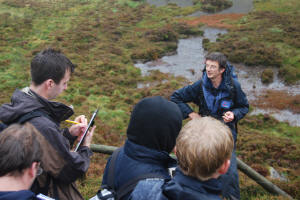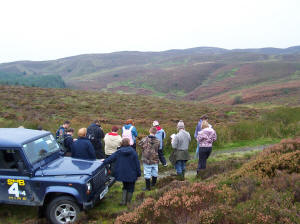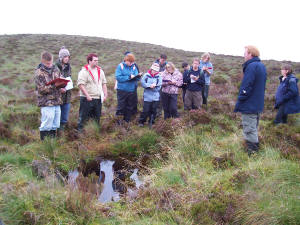RS30310 |
Countryside Management in Practice |
| Visits | |
|
Monday 20 September |
After the initial welcome and module briefing, there will be a one hour workshop about Ecosystem Services before heading off to Cors Caron NNR. After sandwiches at the Visitor Car Park, we will be guided around the reserve by the CCW Warden. |
| Restoration of lowland raised bog |
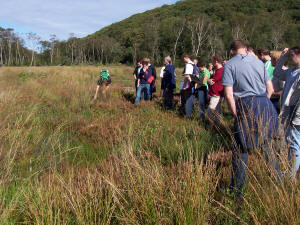 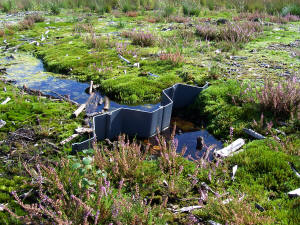 |
| Tuesday 21 September | Excursion to the Ogwen Valley, Snowdonia National Park. |
| Information | Cwm Idwal lies
within the Snowdonia National Park and is a National Nature Reserve
managed by the Countryside Council for Wales. It is also and SSSI
and is part of the Snowdonia SAC. It is an open mountain
environment with an altitudinal range from 300 to 700 metres.
Cwm Idwal lies cradled amongst the northern slopes of the Glyderau mountains, between Bangor and Betws y Coed. Thousands come here every year to enjoy its dramatic scenery: steep ridges and dark cliffs towering silently above a bowl shaped ‘cwm’, with its gleaming lake hidden from the busy A5 below. Cwm Idwal is important for its geology and wildlife. This is one of the best places in Britain to see the effects of the crushing and folding that took place around 450 million years ago when the northern and southern halves of Britain crashed together and pushed up these mountains. It’s also a wonderful place to see the effects of the much later Ice Age. The cwm itself was carved by a huge glacier which sat on the slope, and by a tongue of ice which flowed from the summit over the rocky cliffs of Twll Du. On some rocks in the reserve the pattern of ice scratches show us exactly in which direction the glaciers moved off the mountain. And there’s much more! The bank of stone and clay which forms the lip of lake Idwal, huge scree slopes, the hanging valleys of Cwm Cneifion and Cwm Clyd, massive oval rocks which were smoothed into egg-like shapes by sliding glaciers and shattered shards of rock on the summit of the Glyderau. Since the 17C Cwm Idwal has attracted scientists, botanists and plant hunters. The main attraction for naturalists perhaps is the collection of arctic alpine plants which have managed to hang on here since the Ice Age. On ledges of lime-rich volcanic pumice, beyond the reach of people and goats, grow plants such as moss campion, mountain avens, Welsh poppy, alpine lady’s mantle, Snowdon Lily and purple saxifrage. The reserve includes several other habitats, including the fragile montane heath, found in Wales only on some the highest summits of Snowdonia. It is easily recognised amongst the rocks and scree, a grey-green mixture of grass, crowberry, creeping willow and parsley fern, along with cushions of woolly hair or fringe moss and bright, branching lichens Lower down on the slopes there is grassland, bog, wet heath and the lake itself, which is half a mile long and 300 m wide. Lake Idwal is considered to be internationally important as one of the best examples of upland lakes which have very few nutrients. A number of rare plants also grow along its shores. A range of typical upland birds nest on the reserve. Peregrine falcon and ravens find a haunt amongst the highest cliffs: further downslope, the bouldery grassland is ideal for wheatear, ring ouzel and wren. The numerous streams which flow into the lake provide additional habitat for birds such as dipper and grey wagtail. The pollen grains fossilised in the peat along the shores of the lake tell us that these slopes were clothed in birch some 3-4 million years ago. These trees retreated as the climate deteriorated, and a comeback was almost impossible in the face of increased grazing pressure many centuries later. Today, the number of sheep in the reserve has been reduced and grazing is now carefully controlled in order to give the mountain habitats a chance to develop more naturally in future. During the 1960’s and 1970’s the Nature Conservancy Council experimented with excluding grazing from small fenced areas. There, the heather now flourishes, with more flowering plants as well as longer grasses. To build on this, CCW and the National Trust removed sheep entirely from the NNR in 1998. A shepherd is employed to try to keep the Cwm free from straying sheep. This all bodes well for the future of the Cwm’s fragile wildlife. The Cwm Idwal valley is a popular walking site The site was until recently grazed such that it is largely free from scrub and heather making walking off of paths reasonably easy. The site is popular with walkers, climbers and educational groups and is served by a car park located at Ogwen Cottage and by lay-bys on the A5 road. Access to the site is via a network of well-established paths which run from the car park and the road upwards into the mountains. The paths have been treated for erosion by surfacing them with pitched stone. The site has no formal access agreements but access off linear routes is a traditional and accepted practice. Figures obtained from stile counters indicate that 77,190 visitors used the site between January and October 2002. A study of the use of the NNR by education groups found that 634 education groups visited the site between 25th July and 31st October 2001. Ian Keirle has carried out research into the recreational use made of the area and the results can be seen in his paper titled 'Do walkers stay on paths?: an observational study of Cwm Idwal'. The Green Key Initiative [Website] The Ogwen Valley is a very popular location for walking and climbing and attacts large numbers of visitors. Parking has traditionally been in the small Ogwen Cottage car park and along the side of the A5. Visitor surveys have shown that people travel a long distance to come to the Ogwen Valley and that they spend little in the settlements of the area. To solve the parking and traffic problems and to help increase spending in local communities the 'Green Key' Project was developed by Snowdonia National Park. The ethos of this was that parking should be restricted and a 'compulsory' park and ride scheme developed that would be based in local communities. The idea behind this was to cut congestion and to get people to start their journeys within the local communities. After the first Green Key Strategy was published in 1992 there was a large public uproar against it and an organised campaign to stop it developed. This led to a complete rethink and a new strategy was drafted in 2005m (Snowdonia Green Key - strategy and working plan 2005/6), that dropped the compulsory park and ride and parking restrictions. The initial failure of the project was put down to a failure to consult with communites and user groups in the developemental stage of the project and the new plan has involved considerable public consultation. Blaen y Nant is a National Trust tenant farm in the Nant Ffrancon valley of northern Snowdonia. It is an upland organic farm, which is farmed by the tenant Mr Gwyn Thomas to high environmental standards. |
| Conservation management in Cwm Idwal | 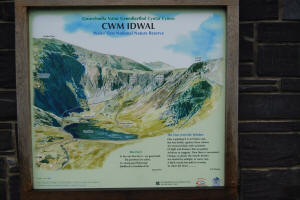 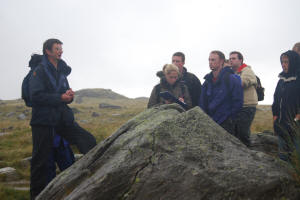
|
| Hill farming at Blaen y Nant |  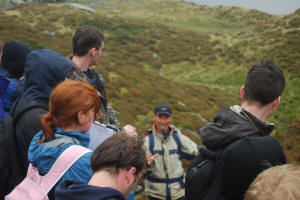 |
| Further information | There is general information on the natural heritage and recreational use as well as nature conservation importance of Cwm Idwal written by the warden, Hywel Roberts [Website]. There is also information on Blaen y Nant farm [Website]. |
| Wednesday 22 September | We will drive to Lake Vyrnwy dam and combine two activities. Mike Walker RSPB will drive us up on to the blanket bog above the forestry to learn about the practical restoration work of the EU LIFE project: blocking open drains and mechanical cutting and grazing of heather to restore this important habitat for bird conservation. For the other activity of the day, Ian Keirle will describe the management of amenities for recreation and tourism along the popular circular road around Lake Vyrnwy. Examples of forest landscaping, investment in infrastructure of car parks, paths, bird hides and view points and provision of interpretation boards will be considered. |
|
EU LIFE Blanket Bog Restoration project |
|
|
The big trees
Flooded village |
 
|
| Further information | Further information can be found on websites for the EU LIFE Vyrnwy project [Website], Lake Vyrnwy recreational facilities [Website] and forest infrastructure for equestrian events [Website]. |
| Thursday 23 September | The demand for cost effective and secure energy supplies requires investment in renewable energy and we will spend the morning with IBERS research staff who will describe Miscanthus as a potential biomass crop that can be grown in the upland margins and burnt to produce energy and heat as well as a biochar: a by-product that can be incorporated into cultivated soil as a stable carbon store. In the afternoon we will join a Glastir farmer event organised by Welsh Farming Connect to learn about this new agri-environment scheme that will be highly influential for biodiversity conservation in the wider countryside in years to come. |
| Friday 24 September | Morning visit to learn about the Tywi Wildwood Project where commercial spruce plantation is being progressively transformed into a mosaic of the original wetland, heath and native woodland cover. We will hear about the motivations for this change in management, in particular the drivers of Ecosystem Services and greater habitat connectivity. In the afternoon, we will visit Hafod Estate and ADAS Pwllpeiran to observe the contrasting objectives of hill farming through the type of experiments that have been carried out to develop agricultural production over recent decades. We will also assess how wind farms are being constructed and the methods of environmental mitigation that are being used to minimise their impact in the sensitive upland environment. |
|
|
Back to RS30310 first page |
